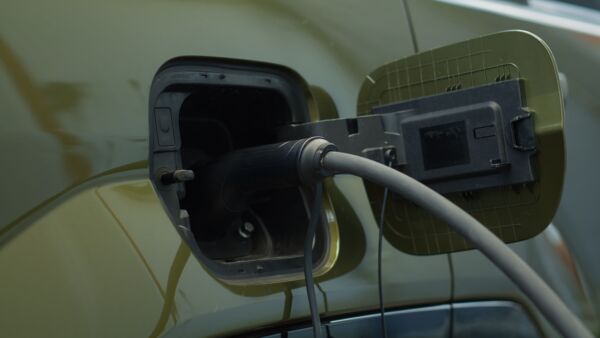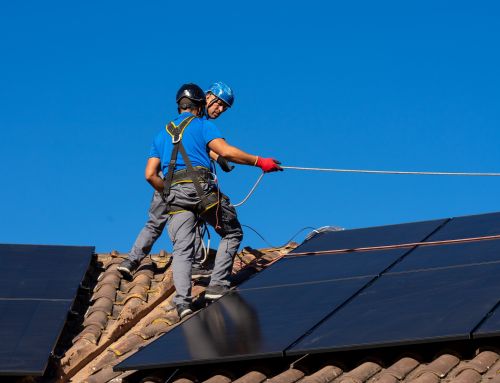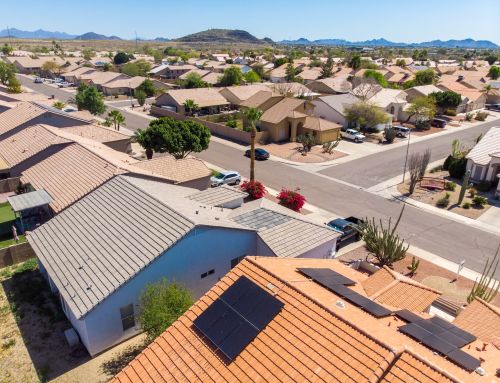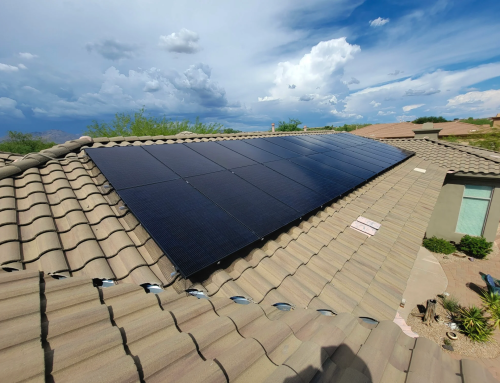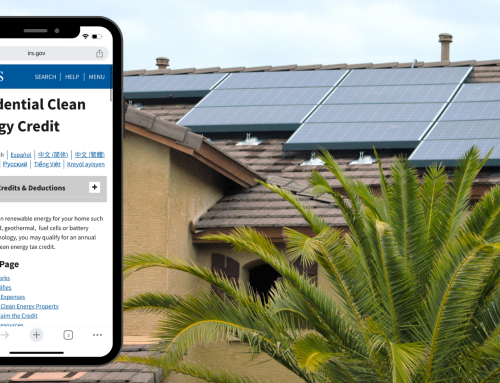At-Home EV Charging Installation Guide for Arizona Homeowners
Electric cars are good for the environment and for your gas bill. But if you actually want to drive one, you need a reliable way to charge it.
There are a few ways to charge an EV. You can plug it into a standard outlet with the cord it came with, or find a public charger. But the most convenient option is to install your own EV charging station at home.
This guide will walk you through how at-home EV chargers work, why you should install one, and how you can lower charging costs by pairing your EV charger with solar panels.
Ways to Charge an EV at Home
Slow Plug-In Charging (Level 1)
All electric cars come with a power cord that you can plug into a standard 120-volt outlet. This is known as Level 1 charging. It doesn’t require any extra equipment—if you have an EV, you have a power cord—but it’s slow. Level 1 chargers can take 40-50 hours or longer to charge an EV to 80% from empty.
Fast At-Home Charging Stations (Level 2)
If you don’t want to wait that long, a Level 2 charger is the solution. Level 2 chargers (aka wall chargers) are much, much faster than Level 1 chargers. They can charge an EV to 80% from empty in as little as 4 hours.
They cost more upfront—you’ll need to buy the charger and, if you don’t already have one, install a 240V outlet—but the benefits you get are worth it.
Why Install a Level 2 At-Home EV Charger?
- Charging Speed – Level 2 chargers are faster, charging you to 80% from empty in as little as 4 hours.
- Always Available – Charge whenever you need to instead of dealing with range anxiety and waiting in line at public charging stations.
- Lower Rates – Charging at home is cheaper than using a public station. You can charge during overnight off-peak hours to save even more.
- Easy Solar Integration – Charging costs are virtually nonexistent when you pair your EV charger with solar panels.
Home EV Charger Installation Basics
Installing an EV charger at home is a simple electrical project that can be completed in a few hours by a professional electrician. Here’s what you should be thinking about if you plan to install one:
Hardwired vs Plug-In
Level 2 charging stations can be plugged into a 240V outlet or hardwired directly into your home’s electrical system.
Hardwired
- Becomes a permanent fixture of your home
- Has a cleaner look
- Requires professional installation from an electrician
Plug-In
- Plugs into a 240V outlet
- If you have a 240V outlet already, you don’t have to hire an electrician
- Looks messier and is not a permanent fixture
Charger Location
Most home EV chargers are rated for indoor (i.e. in a garage) and outdoor installation.
Indoors
- Better protected against heat, dust, and weather
- Takes up garage space
- Make sure the cord reaches your charging port
Outdoors
- Exposure to weather can cause damage / shorten lifespan
- Keeps your garage space free for other uses
- Make sure the cord reaches your charging port
Pairing Your EV Charger with Solar Panels
The ultimate money-saving, environmentally-friendly option is to not only drive an EV but charge it with solar power. In Arizona, where there’s no shortage of sunshine, this combo makes perfect sense.
Here’s how charging your EV with solar panels works:
During the day, your solar panels generate clean energy. If you plug your EV in, solar power will directly flow to your EV charging station.
At night, you can pull from stored solar power if you have a home battery, or from the grid.
In the long run, solar offsets the extra electricity demand from your EV, so your electric bills stay under control. As electricity rates continue to rise, the savings compound.
Have Questions? Book a Free Consultation
Whether you’re ready to get started or you have questions, SouthFace Solar & Electric is here to help. We install Level 2 chargers on their own and paired with solar panels. Our team is happy to walk you through the options and help you choose the right charging set-up for your EV during a free consultation.

